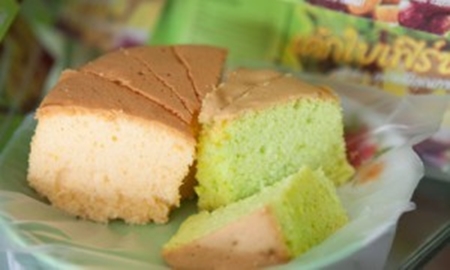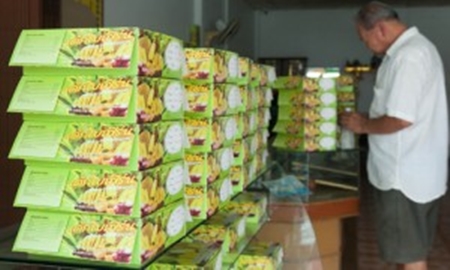The iconic frog-head three-wheeler or Tuk Tuk in Trang
The southern Thai town of Trang isn’t a place that makes headlines. It’s the administrative centre of a far-flung province and life here moves as slowly as latex drips from the trees in the local rubber plantations. Tourists tend to pass through on their way to off-shore islands; such as, Ko Muk with its sea caves or the Ko Phetra National Park.
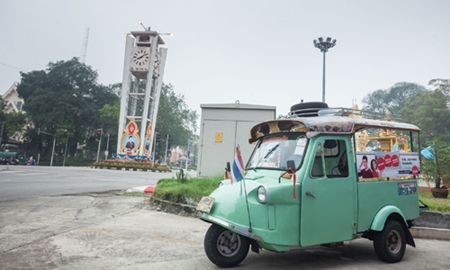
After all, at first glance it seems there’s little reason to stay in Trang Town. It can’t boast ancient temples, the beaches are some way offม and the town centre is modern, practical and bustle-free.
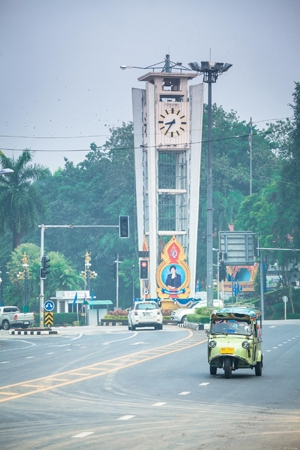
But it’s worth taking a second look, especially if you’re one of the growing groups of people who delight in seeking out Thailand’s unique and tasty dishes. For foodies, Trang is a five-star destination where the Chinese, Muslim and Thai traditions have clashed and then come to a culinary compromise. So there are a thousand tastes to enjoy. Here are a few of them.
Starting with the pork
Get up early in Trang – for breakfast is the best meal of the day. The locals are not content with a bowl of rice porridge. Breakfast is a hearty affair and best enjoyed at one of the bustling local pork and dim sum shops (at last count there were over 70 of these in town). You’d think pork restaurants would be an anomaly in Thailand’s Muslim South. But restaurants like the famous “Trang Mu Yang” are packed every morning. The shops are easily found, just look for the pigs’ heads for sale outside the nearest food place then go in and squeeze onto a table.
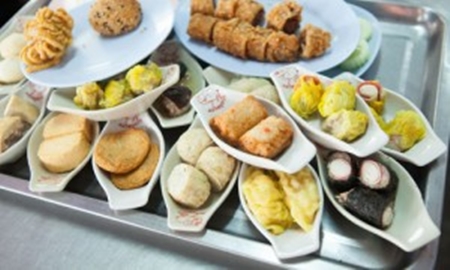
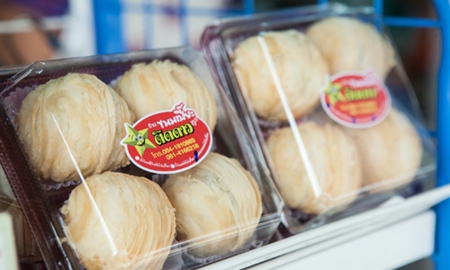
The dining protocol changes little from place to place. Once seated, you’re presented with a tray of dim sum to choose from. The tasty steamed parcels contain anything from ground pork to quail eggs or tofu; all washed down with Chinese tea. But the pork, or Mu Yang, is the star of the breakfast table. After being marinated for several hours with a range of Chinese herbs, spices and honey, pigs are cooked whole during the night. The result is a sweet and crispy meat with the rich belly fat being most popular with diners. The pork is so famous that it’s celebrated in an annual pork festival every September where the town’s chefs share the secrets of their marinades.
Don’t miss the Khanom Chin
Khanom Chin, fermented rice noodles served with fish curry sauce, is popular all over Thailand, but in Trang this dish comes into its own thanks to the abundance of local seafood and amazing coconuts. The dish is another breakfast staple and at restaurants like Khun Poom by the city park, you can help yourself to as much curry as you can handle, as well as large plates of crispy local vegetables and pickles. The night market by the city hall is another good place to try Khanom Chin as well as other rich Muslim-style curries; such as, Massaman or Kaeng Kari Pla.
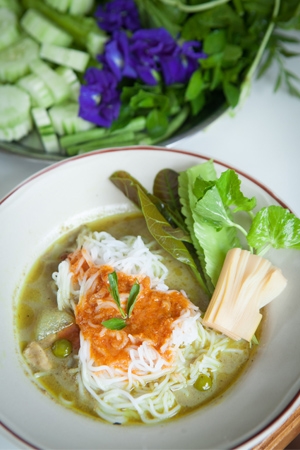
Snack on Trang’s Pink Noodles
Kuai Tieo is as easy to find in Trang as it is in the rest of Thailand, and there are many vendors in the city selling noodles made to their own family recipes. The vibrantly pink Yen Ta Fo is popular in the town, and as well as the fermented soybean paste that gives the dish its vivid colour; bowls are full of the local seafood; such as, tasty squid and crab. A good place to try one these famous noodle dishes is the family-run Khiang Chuan Chim Restaurant on Visetkul Road where you can enjoy your lunch and be kept up to date on the European football leagues by the sports-mad owner.
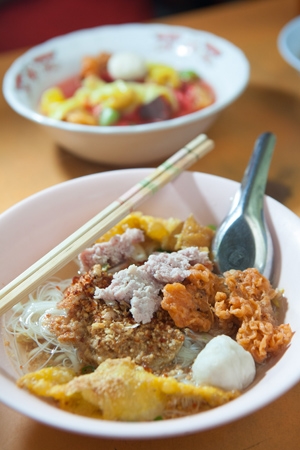
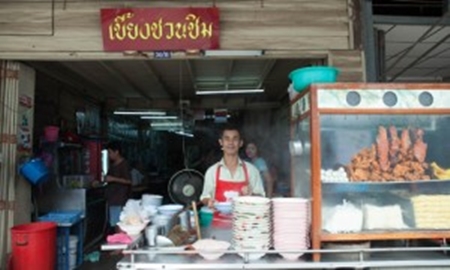
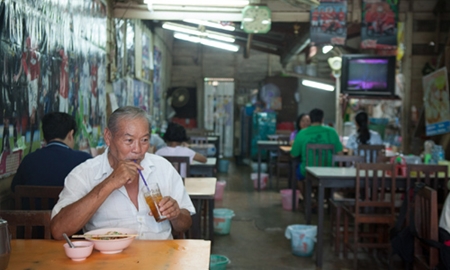
Kopi Coffee
One thing that shouldn’t be missed in Trang is the famous Kopi coffee. Black, strong and sweetened with sugar, this coffee helps you start the day with a kick. It is often served with sweet deep-fried bread called Cha Kui or local donuts called Pa Tong Ko. Kopi is served all over Trang but remember to order it by name, rather than asking for generic coffee to be sure you get the real deal.
Trang Cake
If you are sweet-toothed, end your day with a slice of Trang’s famous cake. This soft sponge delicacy comes in a range of colours and tastes – orange and coffee being the best sellers. The cakes are baked with a hole in the middle like a European Bundt cake and are made without baking soda or preservatives. Trang’s baking tradition stretches back a century when a Chinese immigrant called Kook Ming started making cakes in a home-made oven. He gradually refined the recipe to suit local tastes and the cakes have been selling like… well like hot cakes ever since. There’s even a cake festival in the town held every August.
